Travel
An Odyssey of Oneiric Art Visions Awaits Travelers at the Villa Carmignac, on the French Island of Porquerolles
With the Fondation Carmignac's latest exhibition, "Ulysses' Dream," the tiny island is a dream spot for an art-filled holiday.
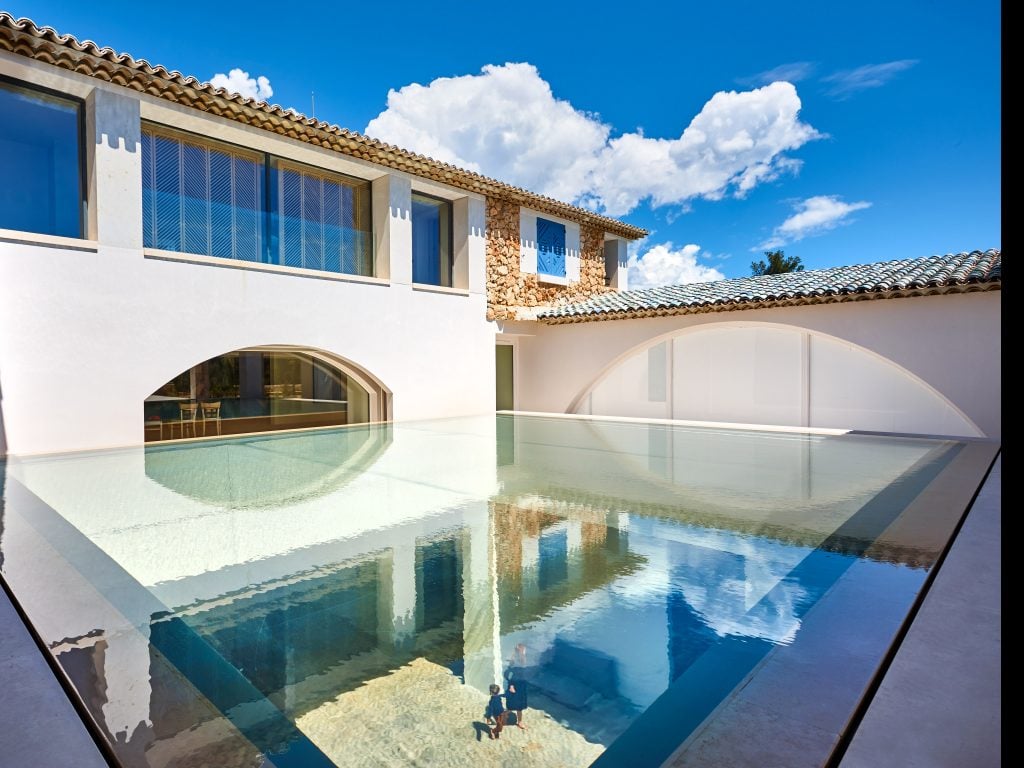
With the Fondation Carmignac's latest exhibition, "Ulysses' Dream," the tiny island is a dream spot for an art-filled holiday.

Naomi Rea

It took a modern-day odyssey (and not insignificant carbon footprint) to get there from London, via plane, train, automobile—and boat. But when I arrived on the island of Porquerolles, any logistical pains incurred by the journey melted away.
The protected Mediterranean island off the coast of Hyères in the French Riviera is the idyllic setting for the Villa Carmignac. Since 2018, it has hosted exhibitions of the collection begun in 2000 by financier Edouard Carmignac for the offices of his Paris-based asset management firm.
Now entrusted to the Carmignac Foundation, which has been led by Edouard’s son Charles since 2017, selections from the more than 300 works in the collection (which is, incidentally, greater than the number of permanent residents on the island) periodically go on display in the Villa’s 2,000 square meters of exhibition space, situated beneath a converted farmhouse.
The latest exhibition, “Ulysses’ Dream,” has been guest curated by Francesco Stocchi, the Italian curator of Rotterdam’s Boijmans van Beuningen Museum, who also organized the Swiss pavilion at the Venice Biennale this year. As the title might suggest, it has been loosely inspired by the Odyssey.
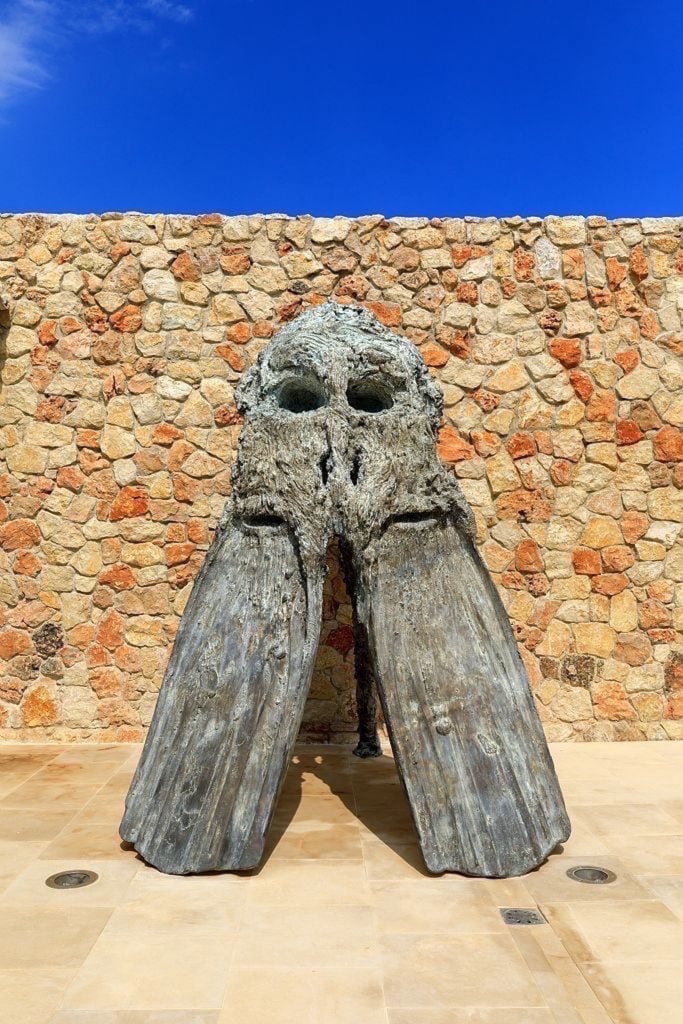
Miquel Barceló, L’Alycastre (2018). Adagp, Paris 2021. ©Fondation Carmignac. Photo: Camille Moirenc.
Fittingly then, visitors are greeted at the entrance of the villa by a Miquel Barceló work, which nods to a local legend. The islanders lay claim to their own episode that was left out of Homer’s epic, in which Ulysses defeats a monster sent by Poseidon, a half-skull, half-sea-creature called the Alycaster, which Barceló has reimagined in a bronze sculpture that looks like it has been made out of driftwood.
As guests pause to inhale the intoxicating scent of the island’s many eucalyptus trees, the foundation invites them to enjoy a ritual beverage—their choice of two mystery infusions, for “memory” or for “oblivion.”
From there, visitors can tour the 15-acre Louis Benech-designed sculpture park surrounding the villa, including permanent works such as Jeppe Hein’s labyrinth of mirrors and a nest of marble eggs by Nils-Udo nestled among the rare wild orchids, wandering pheasants, and other native flora and fauna of the island.
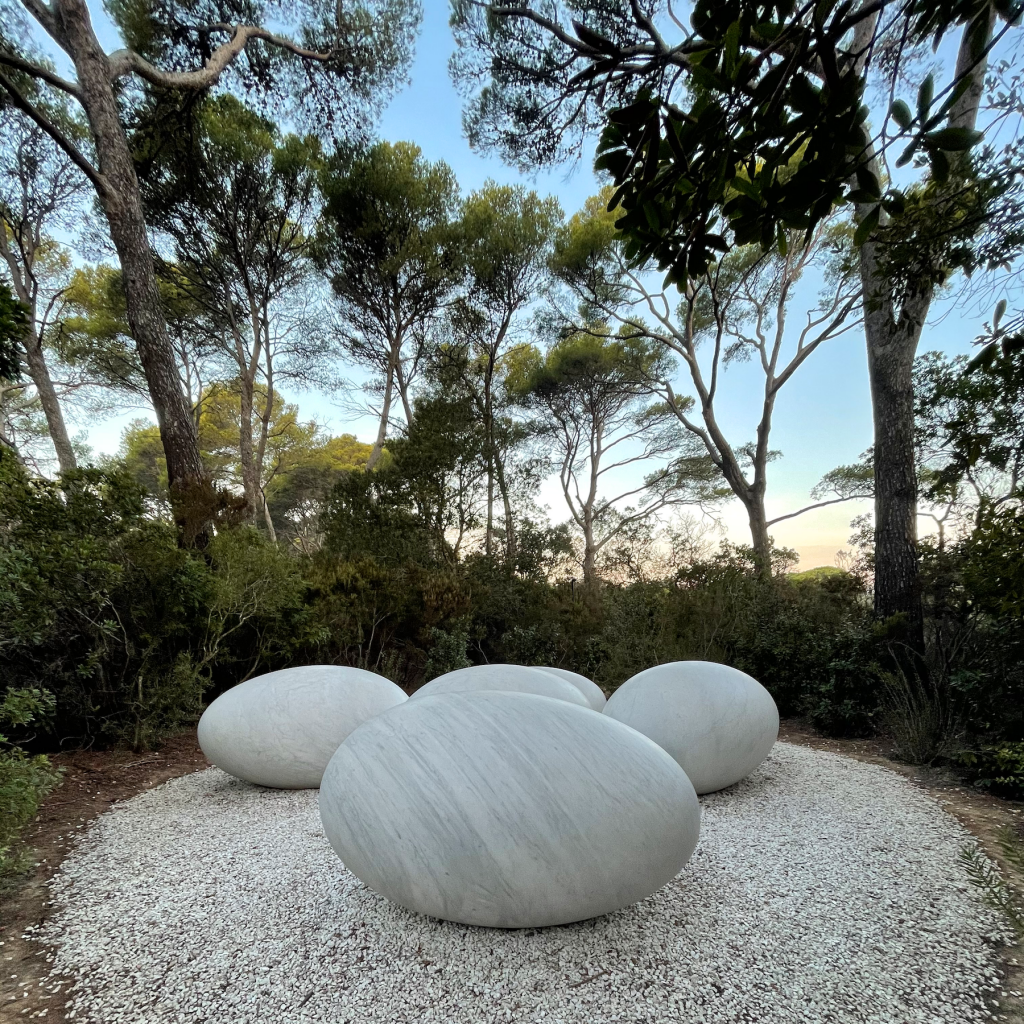
Nils-Udo, La couvée (2019). ©Nils-Udo Fondation Carmignac. Photo: Camille Gasser.
In keeping with an idiosyncrasies of the local community, who can often be seen walking around the island barefoot, visitors are asked to remove their shoes once inside the villa. A descent into the basement space will turn up a labyrinthine exhibition layout, full of dead ends and false walls, intentionally designed to make visitors lose their bearings.
Time itself seems to stand still amid Benoît Pype’s thousand-year hourglass or in the garden pavilion’s Olafur Eliasson installation, where a strobe-lit fountain makes the flowing water appear to freeze.
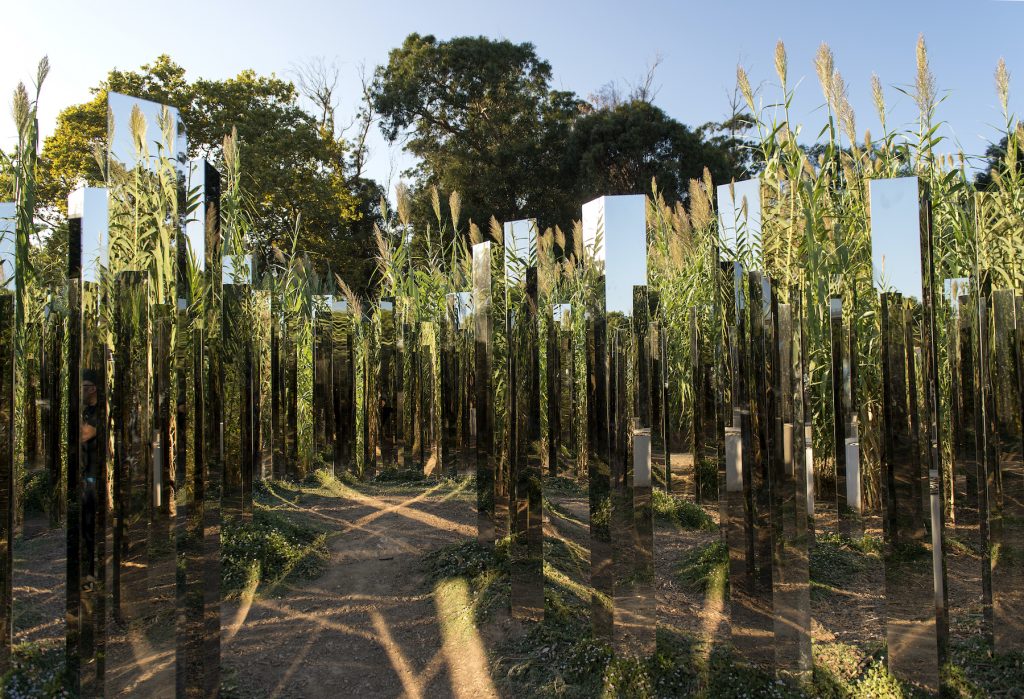
Jeppe Hein, Path of Emotions (2018). ©Jeppe Hein. Photo: Marc Domage.
On view are nearly 70 works from the collection as well as a number of loans and new productions, which hint at time Edouard Carmignac spent in New York in the 1980s, when he sourced work directly from artists at Andy Warhol’s Factory. As such, you’ll find Warhol’s striking Two white Mona Lisas (1980) as well as works by Francesco Clemente and Jean-Michel Basquiat (who also painted Carmignac’s portrait in the ‘80s).
German postwar art is also a theme, but strong contemporary threads can also be felt. Today, Charles often visits art fairs with his father, and they now make joint decisions on new acquisitions for the collection. “We regularly exchange ideas on what we have seen and we have complementary views,” Charles told Artnet News.
The duo’s intergenerational dialogue sometimes plays into the display, such as where Gerhard Richter’s photographic painting Horst with Dog (1965), which the Carmignacs bought together at Art Basel a few years ago, faces off with the aforementioned work by Pype (a Millennial artist and recent acquisition by Charles). “In general, I feel close to this young generation of artists, for example Marcella Barceló, Caroline Achaintre, and Edgar Sarin, whose works are also in the collection,” Charles said.
The exhibition also contains bold depictions of male angst, as seen in one of Rashid Johnson’s “Anxious Red” paintings (2019) and in an all-black “Vanishing Face” by Thomas Houseago (also created in 2019). That said, the villa’s director Anne Racine disputed an exclusively masculine reading.
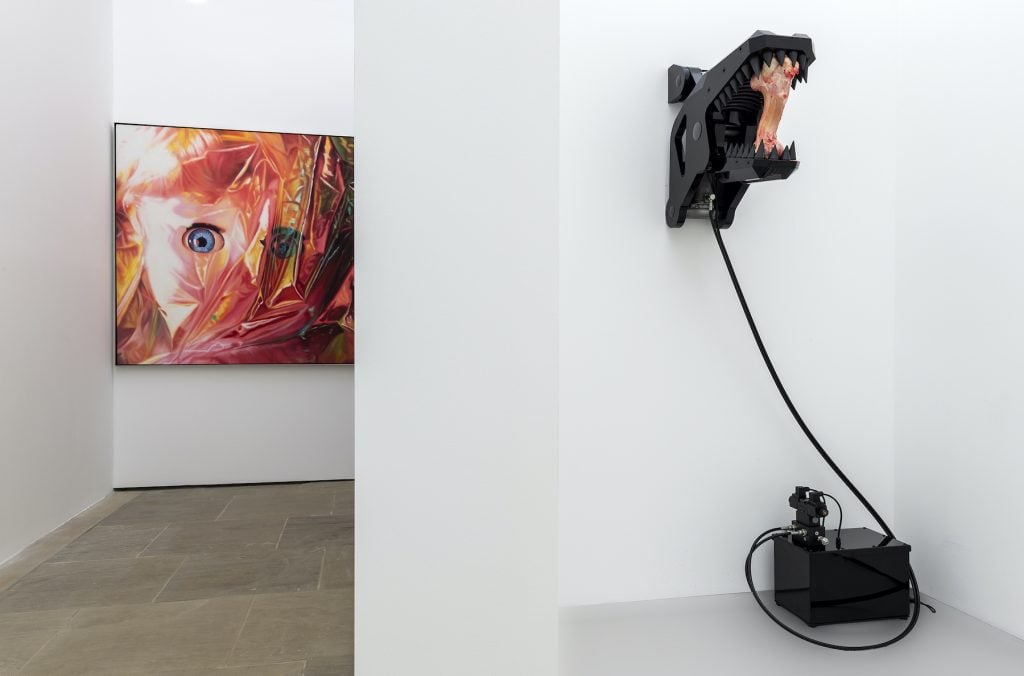
Installation view, “Ulysses’ Dream,” Villa Carmignac, Porquerolles. Work by James Rosenquist and Arcangelo Sassolino. ©James Rosenquist, Fondation Carmignac, ADAGP, Paris 2022. ©Arcangelo Sassolino, Collezione Forin, Italia. ©Fondation Carmignac. Photo: Marc Domage.
“The anxieties that run through some of the works in the exhibition do not seem ‘specifically male’ to me,” Racine told Artnet News. “Man or woman, we have all felt the discomfort and tension of the confinement represented by Rashid Johnson”, she said, adding that the same goes for the works of Houseago, Günther Uecker, and William Kentridge on view. A somewhat revolting work by Arcangelo Sassolino, a mechanical monster designed to grind a bone daily, will certainly set anyone’s teeth on edge.
The show often depicts female figures in the form of sorceresses, sirens, goddesses, and muses. A few powerful pieces stand out. As Racine said, “anxiety is also conjugated in the feminine: Carol Rama’s body parts with her characters suffering as much as desiring, Louise Bourgeois’s doll topped with castration tools, or Camille Henrot’s sculpture with this empty and flaccid belly of post-motherhood seem to me, also, crossed by quite dark emotions.”
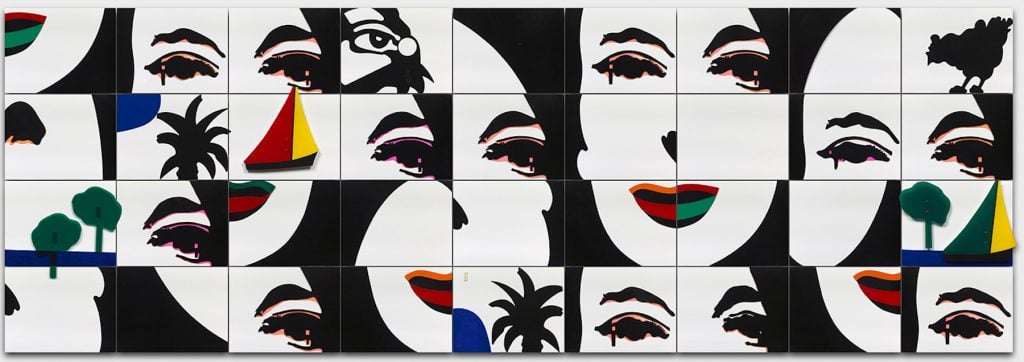
Martial Raysse, Faire et Défaire Pénélope that’s the rule (1966). Collection Carmignac ©Adagp Paris, 2022.
The exhibition is bookended by a pair of works by Martial Raysse, Faire et défaire Pénélope That’s the Rule (1966)—a neat reference to Ulysses’s patient wife, the nightly unravelling of her tapestry, and the accompanying decline of her mental state—and Ulysses, why do you come so late poor fool?
“These two rarely seen, seminal works by Raysse are crucial to the exhibition’s experience,” curator Stocchi told Artnet News. For starters, given the labyrinthine layout of the show, they are only two works every visitor is guaranteed to see.
And for Stocchi, they are symptomatic of “the real hero of the journey,” which is Penelope, not Ulysses. “The empowerment of her role in relation to the ‘hero’ is a fundamental factor of what this exhibition intends to reflect on,” he said.
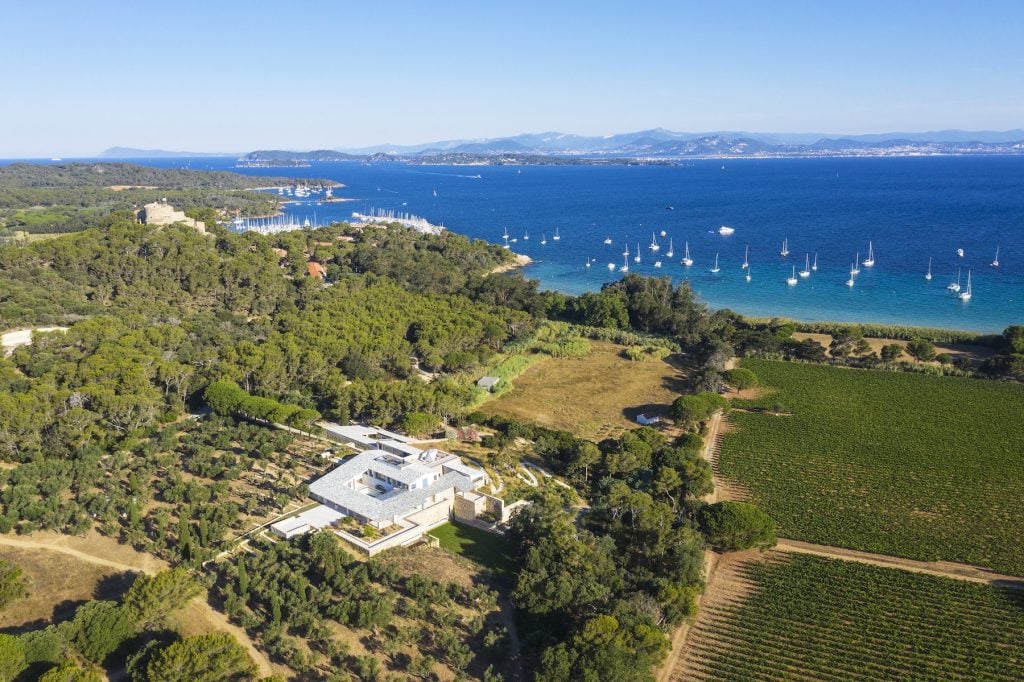
©Fondation Carmignac. Photo: Camille Moirenc.
One of the goals of the foundation is to introduce new audiences of holidaymakers to contemporary art, as well as draw more cultural tourists to Porquerolles, whose hilly terrain and many beaches are perfect for cycling and sunbathing.
If not a vegetarian like this reporter—the island has some catching up to do in that respect—visitors might consider treating themselves to fresh seafood at restaurants such as L’Orangeraie, where you can enjoy stunning views of the harbor at sunset or look out into the town square to watch the locals tossing boules.
And if you’re looking to do lunch or dinner outdoors, the Villa Carmignac’s own Poisson Ivre does not disappoint. Nor does its list of delectable vins du terroir, such as Porquerolles’s own Domaine de la Courtade. When you lay your head down at the end of the day—say, at the lovely Le Mas du Langoustier, amid the serenade of the island’s petit-duc owls—dreams will come easily.
“Ulysses’ Dream” is on view at the Villa Carmignac on the island of Porquerolles, France, through October 16, 2022. See more images of the Villa and exhibition below.
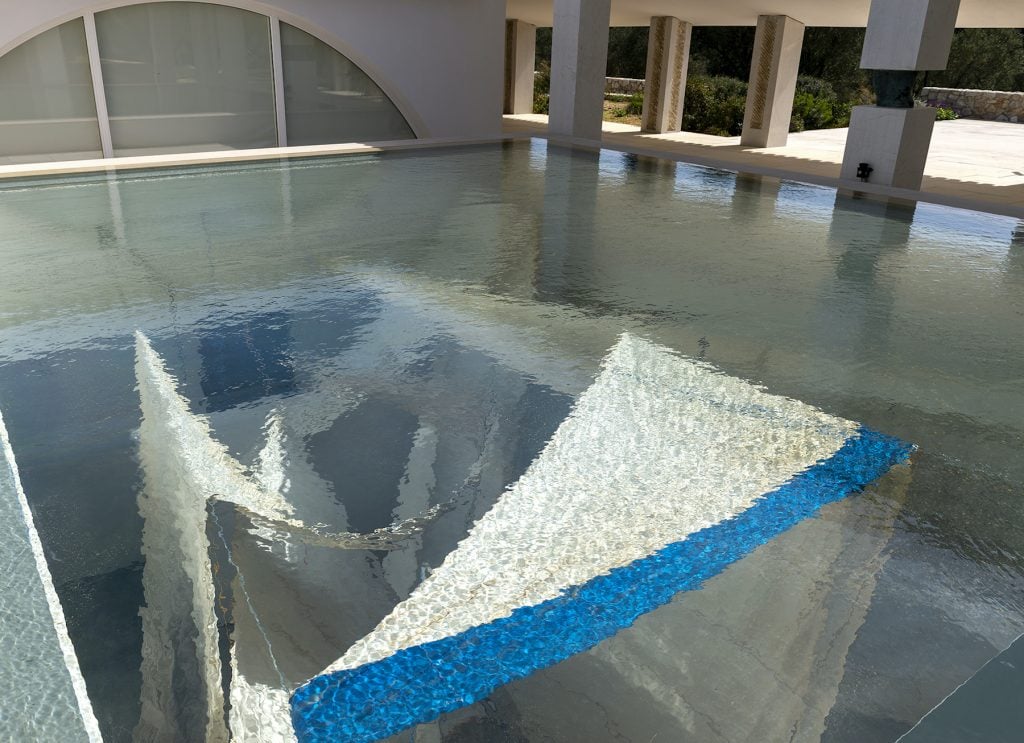
Installation view, “Ulysses’ Dream,” Villa Carmignac, Porquerolles. Jorge Peris, Héroes boca a bajo (2022). ©Jorge Peris, coproduction Fondation Carmignac and the artist. Courtesy the artist. Photo: Marc Domage.
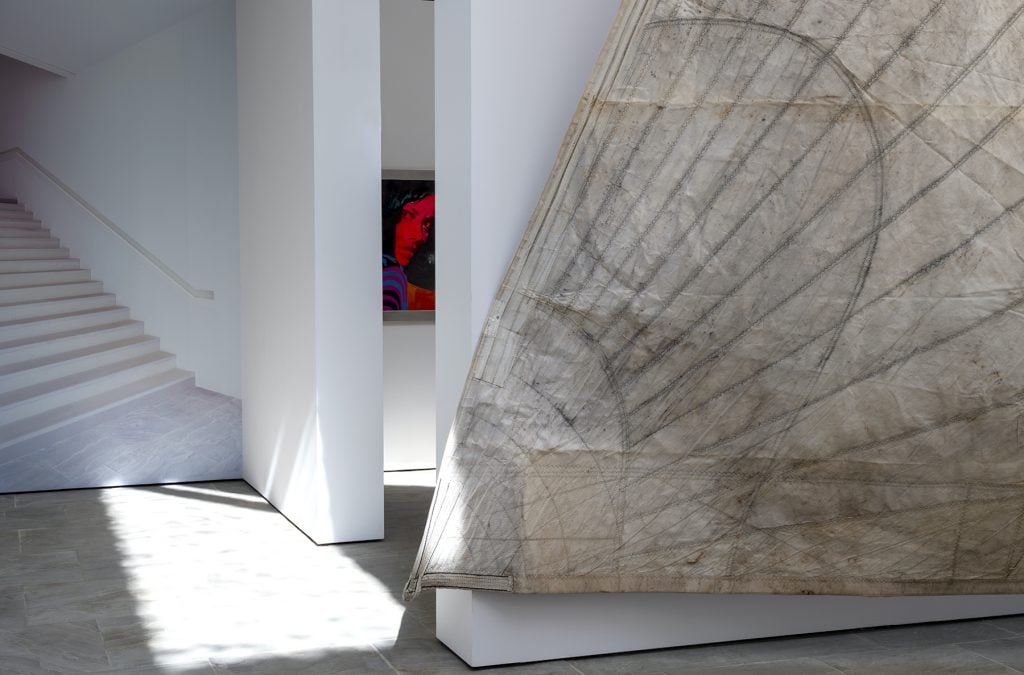
Installation view, “Ulysses’ Dream,” Villa Carmignac, Porquerolles. Work by Martial Raysse and Jorge Peris. ©Fondation Carmignac. Photo: Marc Domage.
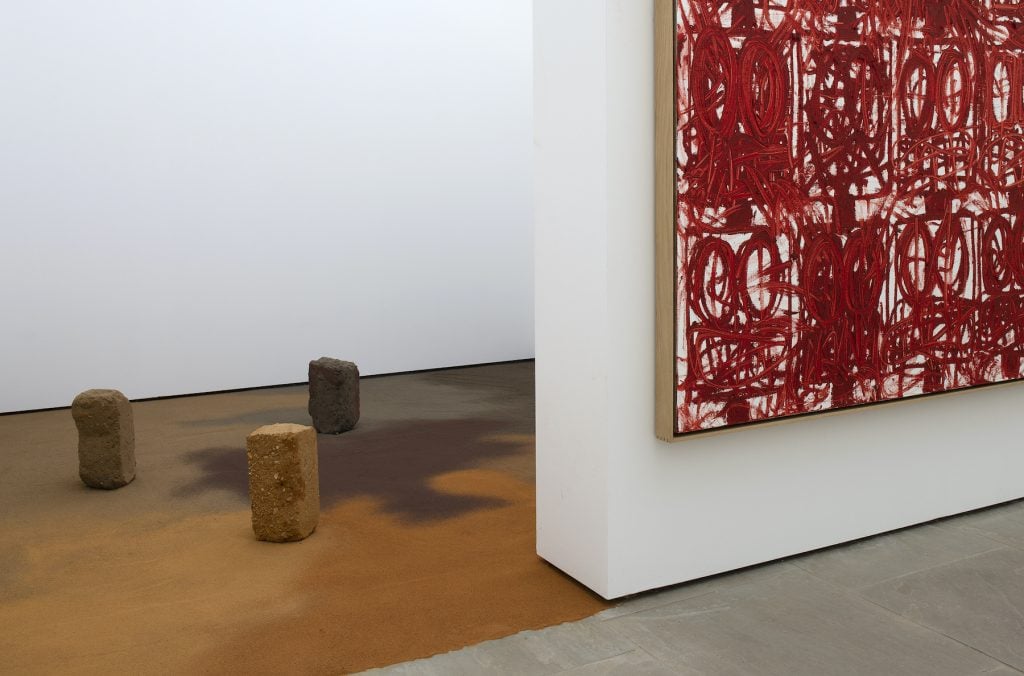
Installation view, “Ulysses’ Dream,” Villa Carmignac, Porquerolles. Work by Alessanfro Piangiamore and Rashid Johnson. ©Alessandro Piangiamore, coproduction Fondation Carmignac and the artist. Courtesy the artist and Magazzino Gallery. ©Rashid Johnson, Fondation Carmignac. Courtesy the artist. Photo: Marc Domage.
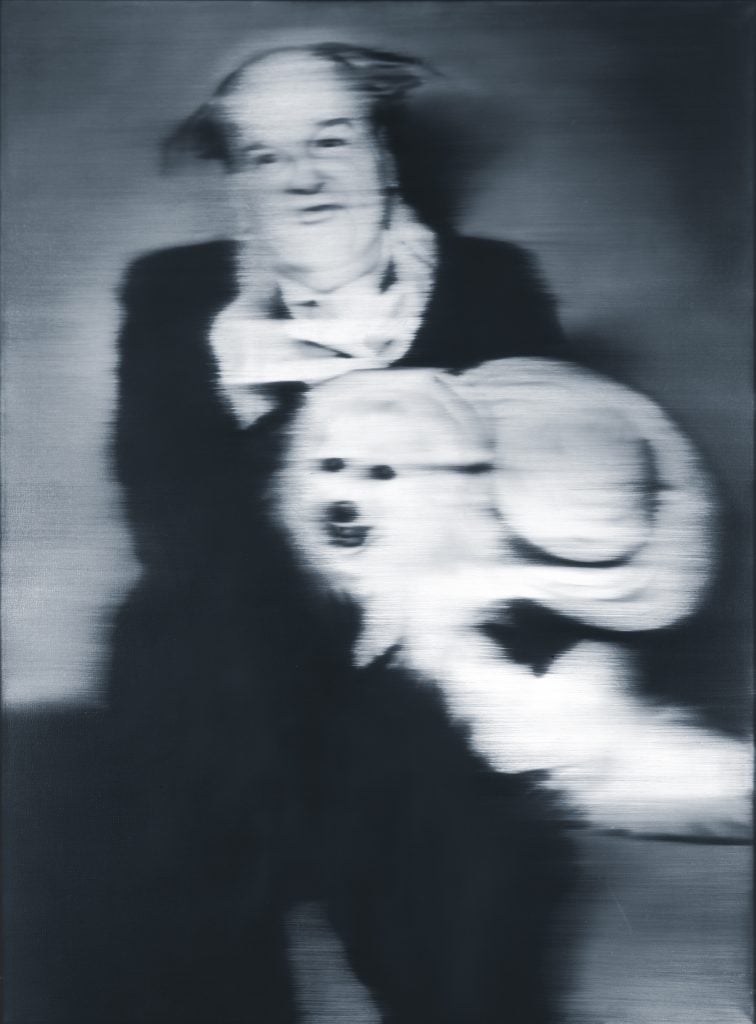
Gerhard Richter, Horst and His Dog (Horst mit Hund) (1965). Fondation Carmignac © Gerhard Richter, 2022 (24022022).
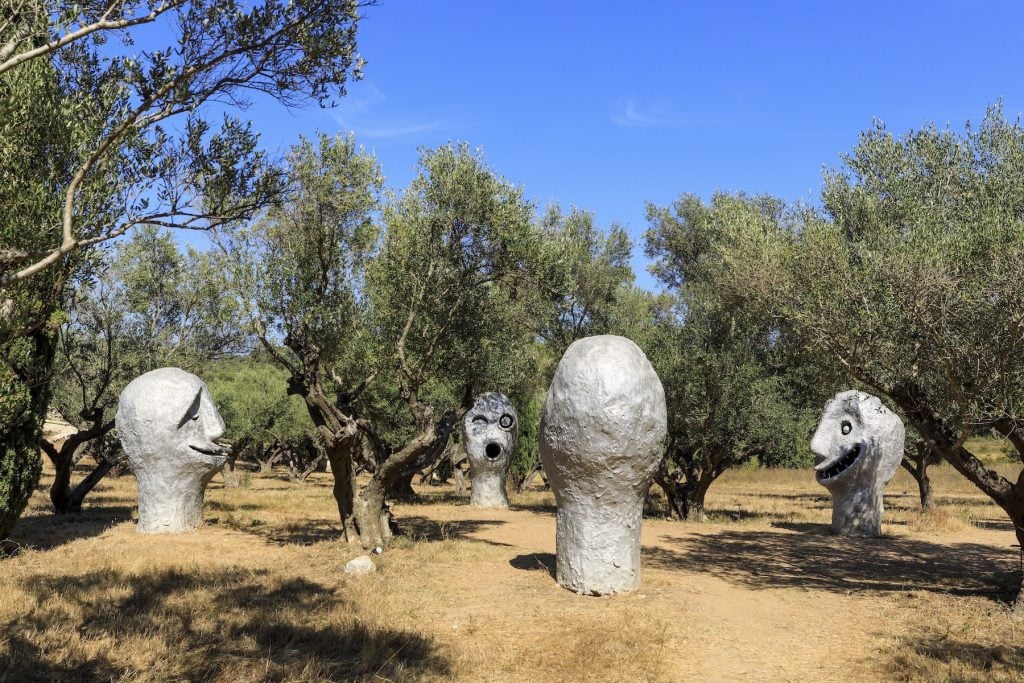
Ugo Rondinone, Four Seasons (2018). ©Fondation Carmignac. Photo: Camille Moirenc.
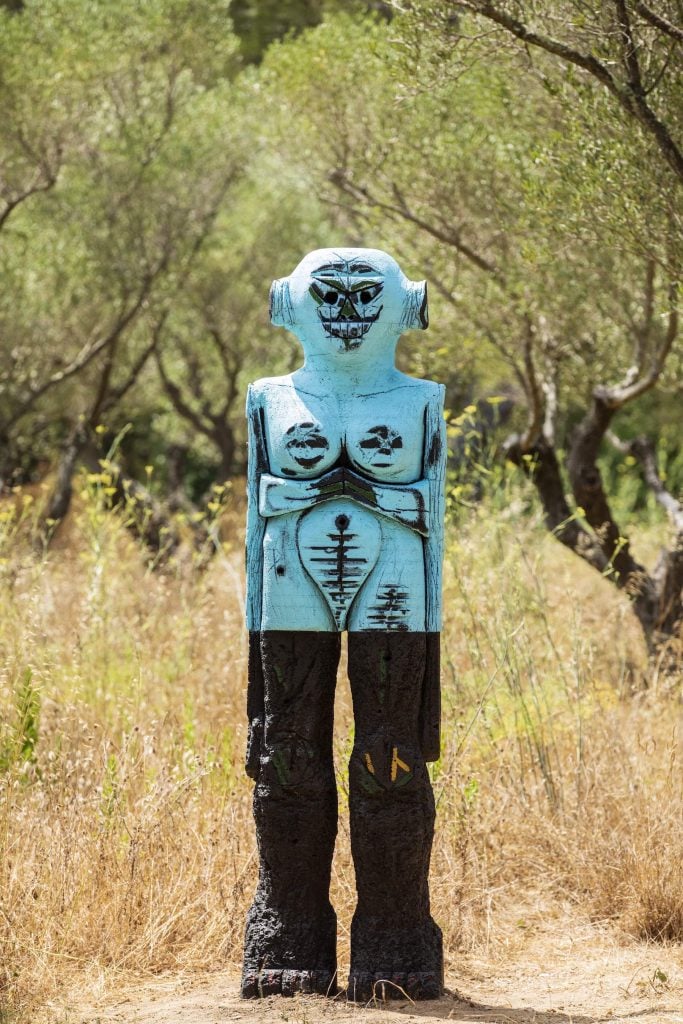
Huma Bhabha, Receiver (2019). ©Fondation Carmignac. Photo: Camille Moirenc.
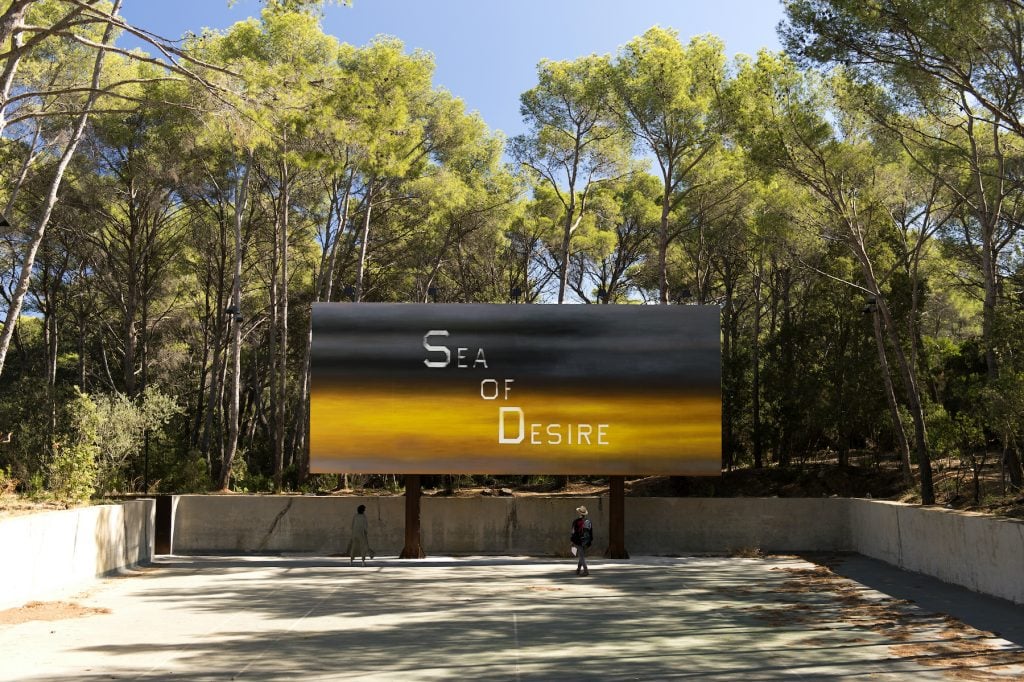
Ed Ruscha, Sea Of Desire (2018). ©Fondation Carmignac. Photo: Marc Domage.

Installation view, “Ulysses’ Dream,” Villa Carmignac, Porquerolles. Olafur Eliasson, Object Defined by Activity (Now and Then) (2009). ©Olafur Eliasson, courtesy the artist and neugerriemschneider, Berlin. Photo: Thibault Chapotot.